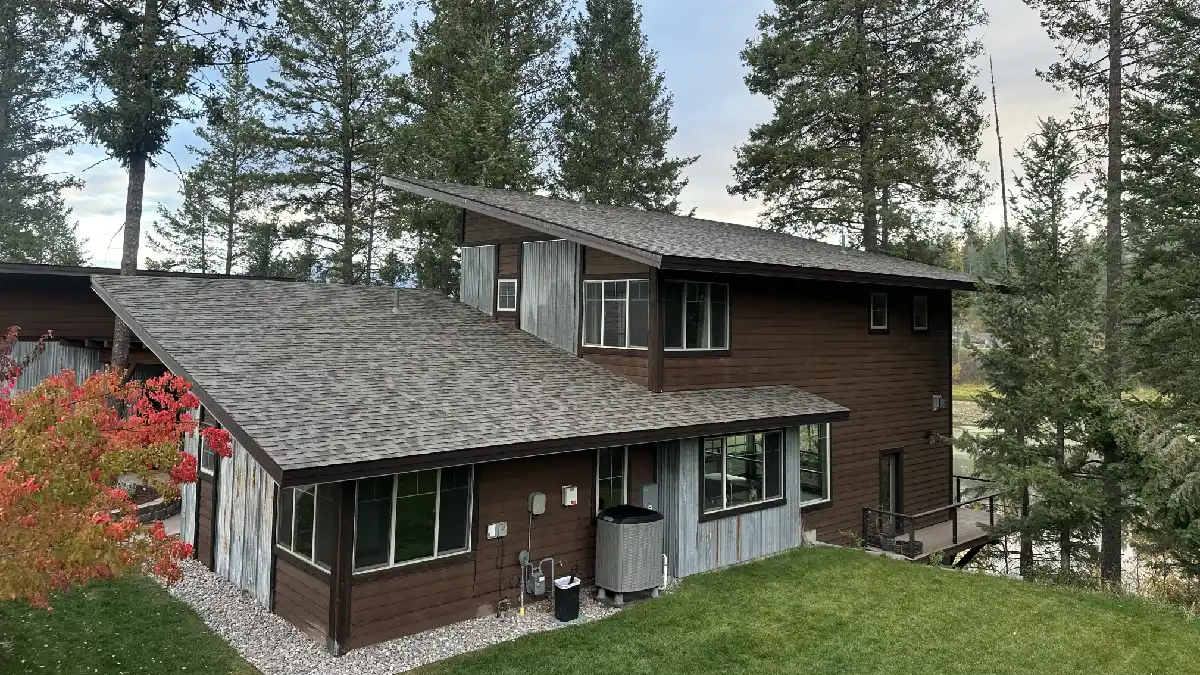Ever wondered, “How old is my roof?” It’s a crucial question for homeowners, as a roof’s age can impact its performance and maintenance needs. Knowing the age of your roof helps you anticipate potential issues, plan for repairs, and make informed decisions about replacement. This information is vital for maintaining your home’s safety and value.
In this guide, we’ll explore easy steps to determine your roof’s age. We’ll cover visual inspection techniques, ways to research your roof’s history, and signs that indicate an aging roof. Whether you’re a new homeowner or simply unsure about your roof’s condition, these methods will help you figure out how old your roof is and what that means for your home’s upkeep.
Importance of Knowing Your Roof’s Age
Knowing the age of a roof is crucial for homeowners. It allows them to take a proactive approach to roofing maintenance and replacement, helping to avoid unexpected issues and expenses. Understanding a roof’s age provides valuable insights into its current condition and future needs. Scheduling a professional roof inspection can provide a detailed assessment of your roof’s condition and help you plan for future maintenance.
Impact on Home Value
The age of a roof significantly affects a property’s value. A newer roof can increase a home’s marketability and sale price. Potential buyers often view homes with a new roof and windows more favorably, as these components are vital for protection and energy efficiency. During the home inspection process, the roof’s condition is thoroughly assessed. A well-maintained roof can create a positive first impression, setting a favorable tone for the rest of the inspection.
In competitive real estate markets, a property with a new or recently replaced roof may stand out among similar listings. This can make a home more attractive to buyers, potentially allowing sellers to set a higher asking price. Additionally, newer roofing materials often come with improved energy-efficient features, appealing to environmentally conscious buyers looking for energy-efficient homes.
Maintenance Planning
Different roofing materials have varying life expectancies. As a roof ages, it becomes more prone to issues and damage. Regular inspections and repairs can help prolong its service life. Knowing a roof’s age helps homeowners plan for future maintenance needs and anticipate potential problems. Consulting a local roofing contractor can provide valuable insights into the current condition of your roof and help you plan for necessary maintenance.
Maintenance logs, records, and receipts can provide valuable information about a roof’s age and history. If these documents are unavailable, having a formal inspection by accredited inspectors or contractors can determine the roof’s current age and condition.
Insurance Considerations for Roof Replacement
The age of a roof plays a significant role in insurance claims and coverage. As roofs age, they may be subject to depreciation, resulting in lower insurance payouts for older roofs compared to newer ones. Some insurance policies provide coverage based on actual cash value (ACV), which takes into account the depreciated value of the roof, while others offer replacement cost coverage.
Insurance companies generally consider a roof’s age when assessing claims related to normal wear and tear. If a roof is beyond its expected lifespan, insurers might argue that issues are due to aging rather than sudden damage, impacting the claim. Additionally, some insurance companies may not offer homeowner’s insurance for homes with roofs older than 20 years, or they may add conditions to the policy.
Visual Roof Inspection Techniques
Visual inspection techniques can help homeowners determine the age and condition of their roof. By examining key indicators, they can assess whether their roof needs maintenance or replacement. Inspecting roof valleys is crucial as they play a key role in directing water runoff and preventing water damage.
Roofing Material and Shingle Condition
One of the most visible signs of an aging roof is the condition of its shingles. As asphalt shingles age, they often curl at the edges or corners, creating a distinctive “cupping” appearance known as curling shingles. This curling can occur due to excess moisture, poor ventilation, or simply old age. Most asphalt shingles last between 15 to 20 years, depending on their quality and maintenance.
Another indicator of shingle age is granule loss. Asphalt shingles are coated with granules that protect them from UV rays and add color. As shingles deteriorate, these granules loosen and wash away. Homeowners should check their gutters and downspouts for an accumulation of these small, grit-like particles. Significant granule loss suggests that shingles are deteriorating and may need replacement.
Cracked or missing shingles are also clear signs of roof aging or damage. These issues require immediate attention to prevent leaks and protect against weather damage. In some cases, a small area of missing shingles can be replaced, but larger affected areas might necessitate a full roof replacement.
Moss and Algae Growth
The presence of moss or algae on a roof can indicate excess moisture and shingle deterioration. While not always a sign of immediate replacement needs, it’s a condition that requires attention. Moss and algae can appear as green growths or black streaks on the roof surface. The type of roofing material can also influence the likelihood of moss and algae growth.
In some cases, treating the roof with special chemicals can remedy the situation. However, it’s crucial to consult a professional roofer before attempting any treatment, as improper cleaning methods can damage the shingles and void warranties.
Sagging or Deformation
A sagging roof is a serious issue that requires immediate attention. It can indicate structural problems, water damage, or aging materials that can no longer support the roof’s weight. Sagging often appears as a noticeable dip or wave in the roofline. Damaged roof valleys can also contribute to sagging by allowing water to pool and cause structural damage.
To measure roof sagging, professionals use a “sagging rod” and a level to determine the amount of deviation. As a general guideline, more than 1/4 inch of sagging per 10 feet of roof for asphalt shingle roofs is considered problematic and warrants professional inspection.
Researching Your Roof’s History
Determining the age of a roof can be challenging, especially for new homeowners. However, there are several effective methods to uncover this vital information. By exploring these options, homeowners can gain valuable insights into their roof’s history and make informed decisions about maintenance and replacement. Knowing the roof installation date can provide valuable insights into its expected lifespan and maintenance needs.
Check Building Permits
One reliable way to determine a roof’s age is by checking building permits. Most local governments require permits for roof installations or replacements. To access this information:
- Visit the local code enforcement office.
- Provide the property address to a code or zoning officer.
- Request a search of the database for previous building permits.
Knowing the roofing company that performed the installation can help you retrieve records of past repairs or installations. The permit should include the issue date and may contain guidelines about the work period. This method offers precise information about the roof’s installation date.
Contact Previous Owners
Reaching out to former occupants can provide valuable insights. Previous owners often remember when the roof was last replaced. To gather this information:
- Maintain contact with the previous owners after closing on the home.
- Inquire about the roof’s age and any recent replacements.
- Ask for any documentation they might have regarding roof work.
Consulting a roofing contractor can provide additional insights into the roof’s condition and history.
This approach can be particularly helpful if the previous owners lived in the house for an extended period.
Review Home Inspection Reports
When other methods fall short, a professional roof inspection can be invaluable. Home inspectors and roofing companies have the expertise to evaluate a roof’s condition and estimate its age. They can:
- Identify signs of aging and wear.
- Assess the overall condition of the roof.
- Provide a reliable estimate of the roof’s age.
These professionals can offer detailed insights into the roof’s current state and help plan for future maintenance or replacement needs.
Conclusion
Determining your roof’s age is a crucial step in maintaining your home’s safety and value. By using visual inspection techniques, researching building permits, and consulting previous owners or professionals, you can gain valuable insights into your roof’s condition and lifespan. This knowledge empowers you to plan for future maintenance, anticipate potential issues, and make informed decisions about repairs or replacement.
Ultimately, understanding your roof’s age has an impact on various aspects of homeownership, from insurance considerations to property value. Whether you’re a new homeowner or simply unsure about your roof’s condition, taking the time to assess its age can save you from unexpected problems down the line. Reach out us Today for professional Roofing services.


